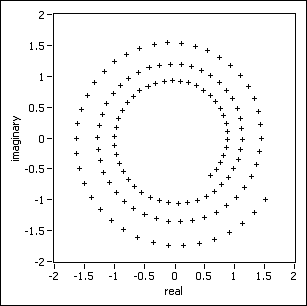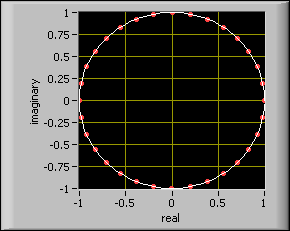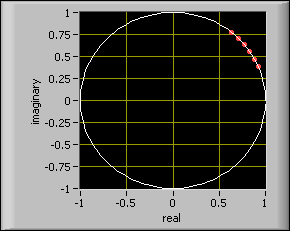Chirp Z Transform VI
Owning Palette: Transforms VIs
Requires: Full Development System
Computes the Chirp-Z transform of the input sequence X. Wire data to the X input to determine the polymorphic instance to use or manually select the instance.
The Chirp-Z transform algorithm is also known as Bluestein's FFT algorithm.Use the pull-down menu to select an instance of this VI.
 Add to the block diagram Add to the block diagram |
 Find on the palette Find on the palette |
















